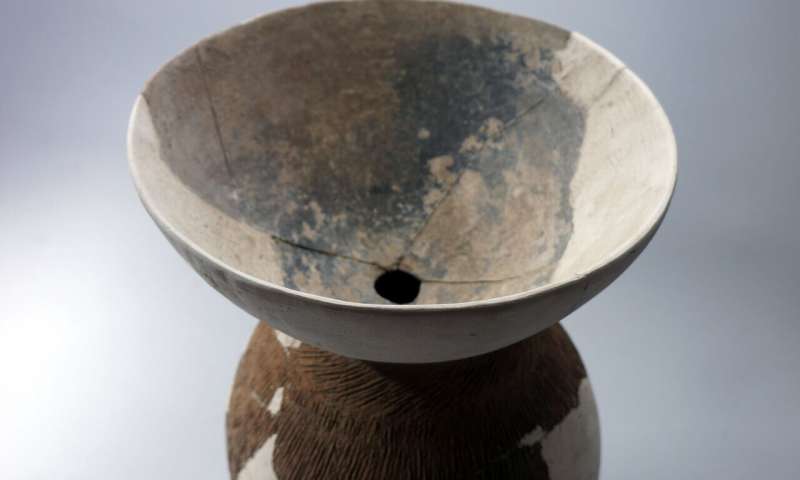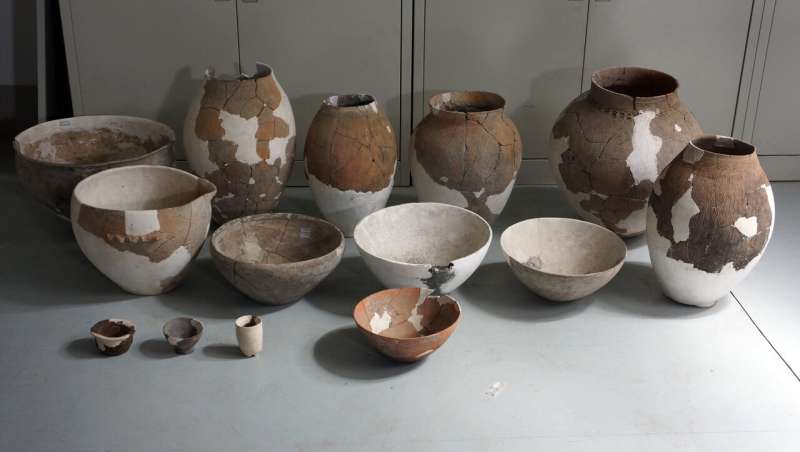June 4, 2019 report
Neolithic pottery sherds from China reveal alcoholic beverage production techniques

A team of researchers from Stanford University, Zhengzhou University, the Chinese Academy of Social Sciences and Shaanxi Provincial Institute of Archaeology has learned more about the ways Neolithic people in China made alcoholic beverages by studying pottery sherds from that era. In their paper published in Proceedings of the National Academy of Sciences, the group describes their study of residue left behind on fragments of pottery.
Human beings have been making alcoholic beverages for approximately 13,000 years, and they have been doing it in different ways depending on what resources they had available to them—the people living in Neolithic China, in what is now the Wei River Valley, had rice, millet and several other ingredients that allowed them to make fermented beverages. In this new effort, the researchers have found evidence showing that people made alcoholic beverages in at least two ways.
The pottery sherds the researchers tested were dated to approximately seven to nine thousand years ago. They found traces of fungi, starches and plant tissue—ingredients for brewing fermented beverages. The sherds and the shape of the pottery they came from indicate that the Neolithic people were making their alcoholic beverages with two methods. One was to allow grains to sprout, which frees sugars in the plant. The other method was more complicated, involving fungi, herbs and grains to make a starter called qū—it allowed for "simultaneous saccharification and fermentation."
The researchers note that the early drink makers also designed and made pottery vessels that promoted fermentation—small-mouthed with wide sides and thin necks allowed for sealing to keep out fresh air, which encouraged anaerobic brewing processes. They also point out that neither process likely resulted in very strong drinks. They also claim the early evidence of fermenting drinks suggests that the desire to create such beverages might have been part of the push toward the development of agriculture. They believe drinking alcohol likely became linked with social and religious activities, and might have even bestowed some degree of status on those able to provide it to others.

More information: Li Liu et al. The origins of specialized pottery and diverse alcohol fermentation techniques in Early Neolithic China, Proceedings of the National Academy of Sciences (2019). DOI: 10.1073/pnas.1902668116
Journal information: Proceedings of the National Academy of Sciences
© 2019 Science X Network




















